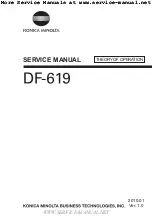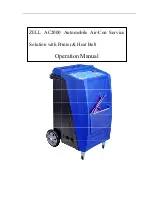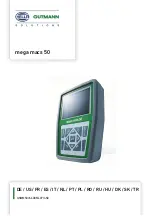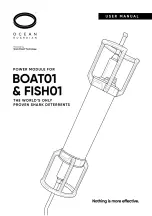
10
E
N
G
L
IS
H
13
MAINTENANCE CHECK LIST
PASS
CHECK
DISASSEMBLE
REPLACE
REPAIR
TUNE-UP
TIGHTEN
CLEAN
LUBRICATE
/
V
O
X
U
T
C
L
The first inspection was done on____/____/____/. (dd/mm/yy)
The previous inspection was done on____/____/____. (dd/mm/yy)
Maintenance check is completed every _______ month(s).
SPECIFICATIONS
Model number
LED lamp
Light intensity
Wavelength range
System operational conditions
System storage conditions
System transportation conditions
Handpiece dimensions
Handpiece weight
Fiber-optic probe dimensions
Fiber-optic probe weight
Battery specifications
Charger stand dimensions
Charger stand weight
Adapter power input
Adapter power output
GT-2000
5 W
2
M1: 2,000 mW/cm and up
2
M2: 1,600 mW/cm and up
2
M3: 1,600 mW/cm (
and up
strong intensity)
2
600 mW/cm (
and up
weak intensity)
Blue Light: 420 ~ 490
UV Light: 360 ~ 420
250(L) x 40(W) x 90(H) mm
215 g
75 mm(L)
25 g
7.4V, 1350 mAh
150(L) x 90(W) x 120(H) mm
260 g
AC100~240V 50/60Hz
DC 9V, 1.3A
Temperature: 25°C to 35°C (77°F~95°F)
Humidity: 15% to 95% @ 40°C, noncondensing
Atmospheric Pressure: 700-1060 hpa
Temperature: -20°C to 65°C (-4°F~149°F)
Humidity: 15% to 95% @ 40°C, noncondensing
Atmospheric Pressure: 700-1060 hpa
Temperature: -20°C to 65°C (-4°F~149°F)
Humidity: 15% to 95% @ 40°C, noncondensing
Atmospheric Pressure: 700-1060 hpa
nm (peaks at 455 ~ 465 nm)
nm (peaks at 400 ~ 410 nm)
x Ø10
→
Ø8 mm
Guidance and manufacturer's declaration – electromagnetic emissions
The model
BASE280
is intended for use in the electromagnetic environment specified below.
The customer or the user of the model
BASE280
should assure that it is used in such an environment.
Emissions test
Compliance
Electromagnetic environment
–
guidance
RF emissions
CISPR 11
RF emissions
CISPR 11
Harmonic emissions
IEC 61000-3-2
Voltage fluctuations/
flicker emissions
IEC 61000-3-3
Group 1
Class B
Class A
Not applicable
The model
BASE280
uses RF energy only for its internal
function. Therefore, its RF emissions are very low and are
not likely to cause any interference in nearby electronic
equipment.
The model
BASE280
is suitable for use in all
establishments, including domestic establishments and
those directly connected to the public low-voltage
power supply network that supplies buildings used for
domestic purposes.
Recommended separation distances between
portable and mobile RF communications equipment and the model
BASE280
The model
BASE280
series is intended for use in an electromagnetic environment in which radiated RF
disturbances are controlled. The customer or the user of the model
BASE280
can help prevent
electromagnetic interference by maintaining a minimum distance between portable and mobile RF
communications equipment (transmitters) and the model
BASE280
as recommended below, according to
the maximum output power of the communications equipment.
Rated maximum output
power of transmitter
W
Separation distance according to frequency of transmitter
m
150 kHz to 80 MHZ
d =
1,2
P
80 MHz to 800 MHZ
d =
1,2
P
800 MHz to 2,5 GHz
d =
2,3
0,01
0,1
1
10
100
0,12
0,38
1,2
3,8
12
0,12
0,38
1,2
3,8
12
0,23
0,73
2,3
7,3
23
For transmitters rated at a maximum output power not listed above, the recommended separation distance
d
in metres (m) can be estimated using the equation applicable to the frequency of the transmitter, where
P
is the maximum output power rating of the transmitter in watts (W) according to the transmitter
manufacturer.
NOTE 1 At 80 MHz and 800 MHz, the separation distance for the higher frequency range applies.
NOTE 2 These guidelines may not apply in all situations. Electromagnetic propagation is affected by
absorption and reflection from structures, objects and people.
P
EMC Tables
:














































